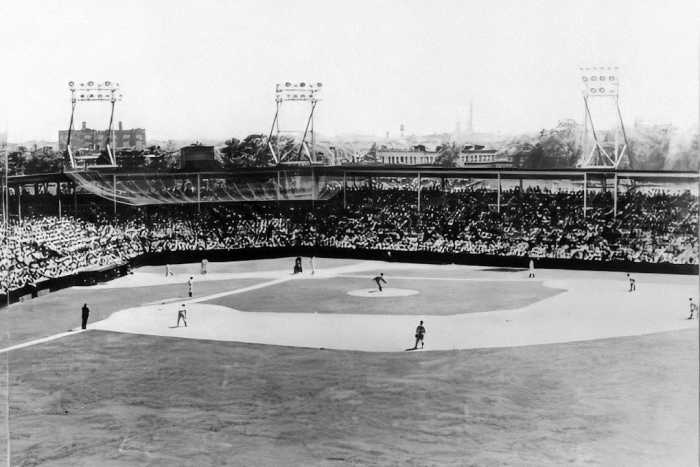By Jefferson Siegel
Earlier this month, as people tried to shake off the effects of daylight savings time, a small group of dedicated volunteers took part in a very special spring-cleaning project.
In a far corner of Chinatown, in the shadow of the Manhattan Bridge, the interior of the 118-year-old Eldridge Street Synagogue received the equivalent of a sponge bath. Several dozen people washed, scrubbed and mopped up dust from the most recent phase of an ongoing restoration project, intended to restore the building to its former grandeur as a house of worship while creating a museum and educational center.
In the late 1800s, 75 percent of New York’s Jewish population lived on the Lower East Side. In those days the area was more densely populated than Bombay or Calcutta. And each week on the Sabbath, throngs of worshippers grew so large that police had to provide crowd control.
The synagogue, now a national historic landmark, was the first major house of worship in the area built by Eastern European immigrants. By the beginning of the 20th century, the synagogue had over 1,000 members but those numbers would soon dwindle as congregants prospered and moved to other neighborhoods. By mid-century, the soaring sanctuary was closed for lack of use and the few remaining members worshipped in the basement study room. With few members and little income, the building rapidly fell into a state of disrepair.
The synagogue’s Clean and Shine Day takes place each spring, but Sunday’s followed completion of part of an ongoing renovation project that was first planned almost 20 years ago. In 1986 the nonprofit Eldridge Street Project was created and, after several years of planning and fundraising, work began in the early 1990s to restore the building’s structure while adding some 21st-century touches. Door ramps and an elevator will make most areas of the building accessible. Skylights have been cleaned. A new heating system and air conditioning will provide comfort.
A group from upstate Utica had arrived to take a tour of the building, but upon learning it was cleaning day, some happily rolled up their sleeves. Most of the work consisted of washing down surfaces and scrubbing away layers of dust. Work mingled with fun as volunteers took a pizza break, after which they slowly made their way up a narrow, winding wooden staircase for a tour of the upper balcony. This area was once reserved for female congregants of the Orthodox congregation but, it was noted, provided the most spectacular view.
On the balcony, the benches have been piled on the sides as work continues, but in the sanctuary, they are back in place. Amelia and her parents came from the Upper West Side to help. “It sounded like fun and I like to clean,” she said, swabbing a red mop across the old wooden floor. Nearby, Jennie and Daniel, two youngsters from New Jersey, performed detailing work with toothbrushes and sponges on the sides of old benches bearing faded gold-leaf numbers.
Looking on with a sense of pride and gratitude was Annie Polland, an educator and the building’s historian. “A lot of people come to the Lower East Side to learn about their grandparents,” she said. “I love these events because we get everyone from the young to the older involved in history.”
The sancturary seemed brighter as buckets of water turned dark with dirt, but even a child’s enthusiasm can wane, so everyone was invited to the basement for an egg-cream break. Amy Waterman, executive director of the Eldridge Street Project, was unpacking boxes pulled from storage. “This was the first major restoration” of the building, she said. Work “on all domes and the sanctuary level, painting and plastering will begin within the year,” she added.
Waterman stood by a wall covered with old street signs written in Hebrew and Yiddish.
“Once complete, the building will continue to be a cultural center as well as a synagogue,” she continued. “One of the components of the museum will be a family history center with interactive exhibits that are about the neighborhood, the synagogue’s history, about architectural and historical preservation.”
Perhaps the most daunting part of the restoration was the creation of a subbasement. Early on, a crawl space was discovered under the basement. After a year of digging and removing sand, a new, modern level was carved out that will be used for staff offices as well as to house ventilation and heating equipment.
Lorinda Ezersky, president of the synagogue’s board of directors, led a few visitors through the freshly painted warren of rooms. Standing by a pillar unearthed during the digging, she said, “Even if we did nothing else, this building will be able to stand for 100 more years. This is a moment in Jewish history.”
Major work on the balcony area continues and the original stained-glass windows are still in storage. But the museum and educational programs are active and drawing crowds. On Sunday, April 17, a pre-Passover walking tour will give participants the chance to sample traditional holiday foods while satiating their neighborhood curiosity. Waterman noted the restoration is “introducing aspects of Jewish culture to non-Jewish visitors. We see many schoolchildren during the year.” The synagogue also has a policy of welcoming visitors for services.
WWW Downtown Express
































